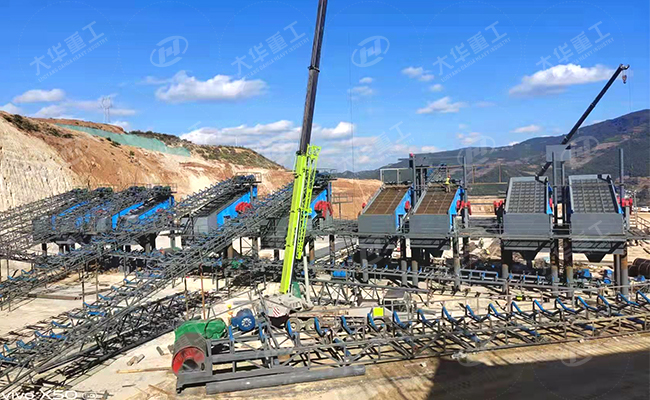Screening, which is very common in sand and gravel production lines, is classified according to the shape and size of different materials. Whether it is the pre-screening at the front end or the separation of the finished materials at the end, it can be said that it runs through the beginning and the end from the “beginning” to the “end”. This article will take you to know those “sieving” in the sand and gravel production line!

- Classification of finished materials-independent screening (circular vibrating screen)
When it comes to sieving, the common one is the sieving of the final finished sand and gravel aggregates. The aggregate processed by a production line is more than a finished product of one particle size, and different users have different requirements for the particle size of sand and gravel aggregates. Therefore, they are screened into products of various particle sizes and supplied to various users, which are called independent screens point. A circular vibrating screen is often used for independent screening. - Pre-screening
Sometimes it is necessary to screen before crushing. For example, the raw material has a large range of particle size, and large pieces of material need to be roughly crushed with jaw crushers, while small pieces of material can be directly screened and then enter the subsequent equipment to avoid crushing. No need to re-enter the jaw. The screening at this time is called prescreening. For sand and gravel processing plants, pre-screening can avoid ineffective crushing of materials, thereby increasing the production capacity of crushing equipment and reducing power consumption. A soil-leakage feeder or a special vibrating screen is ideal pre-screening equipment. - Check the screening-circular vibrating screen
Many production lines also add a screening process after crushing to control the particle size of the crushed products (unqualified materials are screened out or returned to the crusher for crushing until they meet the particle size requirements). This can be called inspection screening. Its purpose is to sieve out large pieces of unqualified particle size from the product of the crushing equipment, so that the product does not exceed the required upper limit of particle size. Inspection screening is similar to independent screening, and most of the equipment used is circular vibrating screen. - Dewatering Screening——Dewatering Screen
The main function of the dewatering screen is dewatering, desliming and de-intermediation. The equipment is vibrated in a low inclination and large linear vibration, combined with an electromagnetic vibrating screen to clean the sand on the screen. The sand is discharged from the screen, and the water is discharged from under the screen into the tailings pump tank.
If the water content of the material in the sand and gravel production line is too large, it can be dehydrated and screened. On the one hand, the product quality can be improved, which is convenient for storage and transportation, and reduces the transportation volume. On the other hand, water can be recovered for recycling. Dewatering screening requires a special dewatering vibrating screen. - Selective screening-sand and powder separator
In some cases, sieving needs to separate the bulk materials by quality, such as separating sand and stone powder by grade in a sand and gravel production line. This sieving is called selective sieving. The equipment used at this time is a sand powder separator.

